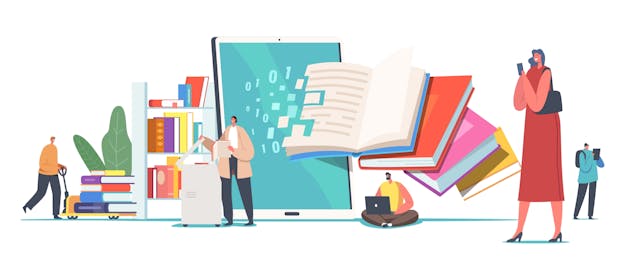In the past 18 months, educators across the country learned how to adjust their instruction to online learning environments; many had to completely rethink how they would approach their content to meet the needs of all learners.
Digital Promise recently spoke with educators from Lone Star Middle School in Nampa, Idaho, an HP Spotlight School. HP Spotlight Schools are part of the Reinvent the Classroom initiative, a collaboration between Digital Promise, HP, Microsoft and Intel, recognizing Powerful Learning with technology. Thanks to district-provided HP Laptops and digital hotspots, learning never stopped at Lone Star throughout the pandemic. Now, teachers are preparing to take the lessons learned during virtual learning back into the classroom.
Lesson 1: Creating on-demand content makes learning more accessible
To address learners’ needs in the virtual setting, many educators began creating their own digital content. Aaron Moiso, a pre-engineering and robotics teacher, explains, “I started producing short video lessons to teach students different concepts. I would have instructions on how to assemble different parts and different gear systems, and then they could do it at home.” Before long, Moiso found he had created a video library useful in any setting. “Students can re-access [the videos] when they need some re-teaching. It frees me up to be able to spend more time helping kids go beyond where they currently are, while addressing the needs of those kids who just need a quick refresher on a concept we taught.”
Social studies teacher Ben McCrea had a similar experience: “I've learned to have things available by doing a recording, a screencast, something that is captured for later.” This is especially valuable for content that’s not available in other digital resources. McCray says, “I have information about the Punic Wars and Hannibal that’s not available in the textbook. It's just something that I've studied a lot.” In the face-to-face environment, those recordings make learning accessible for students who were absent. “I can upload that to Microsoft Teams, and if they've missed a day, they can go back and have a similar experience to the kids who were there that day.”
Interested in becoming an HP Teaching Fellow? Sign up to be notified when applications open.
Lesson 2: Technology is a tool for connection as much as it is for learning
A major concern of educators, parents and students during virtual learning was the potential for missing interpersonal connections. Using Microsoft Teams, teachers at Lone Star found ways to help relationships thrive. Olivia Pecora, a special education teacher, explains, “I did daily check-ins with students just to see, ‘Do you need anything? Is there anything I can help you with?’ That really helped me stay connected to them, so that when we came back in the fall, virtually and eventually hybrid, students knew that I was there for them.” For Aaron Moiso and his students, being online created more personal connections: “I had a lot more one-on-one interactions instead of full class. Some students found it really helpful. Even now, students will contact me online, and we'll do one-on-one sessions.”
Lone Star’s teachers built connections among the whole student body by holding a virtual spirit week using Flipgrid. Questions were posted throughout the day, and students could respond and interact. Social studies teacher Morgan Keena reflects on the benefits: “It helped students gain connection with each other, and it also helped them gain some comfort with that camera on their device that they were suddenly being asked to use to join class. With Flipgrid, being allowed to take different shots and try again, add filters, it made students more comfortable with what they were being asked to do.” Morgan also explains how the student ambassadors, who helped in planning spirit week, used Microsoft Teams to connect: “I learned that if we give students opportunities to be leaders, they will take that opportunity, and they will run with it. They were sharing files with each other. They were asking each other questions. I hope to carry that into next year, not only for student ambassadors, but my own classroom as well.”

Lesson 3: Student agency supports engagement now and builds skills for the future
During virtual instruction, teachers found themselves seeking new ways to keep students engaged—discovering the importance of student agency. Ariel Schoenhuth, a 6th grade science teacher, reveals, “What I learned this year is that students need a reason, and that reason has to come from them and not from me. When you give them project-based learning and an opportunity to actually create something and bring it into the world, you get more buy-in. You have them teaching themselves, teaching each other, and sometimes teaching me how to do things. That is so empowering for them.”
Authentic and challenging learning experiences help students build habits of mind for the future. Drew Williams, Lone Star’s Instructional Coach, says, “What's more important than anything is that students develop ways to manage their learning process. Students will always need skills to manage their work and to work with one another. Give kids choice in the direction they want to go and how they're going to create a product that shows what they know. Give them spaces where they can work at their own pace and teachers can offer support and targeted feedback. Not just when we're online, and not just when we're in a hybrid environment. Those are skills that will transfer into the upcoming school year and into any format that we use for learning.”
As we move into the new school year, reflecting on the challenges recently overcome, let’s continue to put into practice the lessons that we’ve learned. We need to make learning more accessible to all. We have to commit to establishing personal connections across learning environments. And we must strive to empower our students with the means to chart their own unique learning journey.



